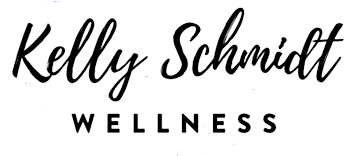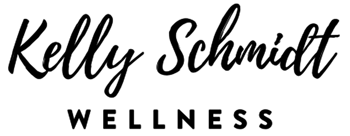For frequent viewers and those new to my site, you will know or become familiar with the notion I do not advocate a diet rich in dairy, especially not pasteurized, grain-fed, non-organic dairy. Yet, with this, common questions arise regarding the avoidance of dairy and bone health.
Firstly, bone health is more than getting enough calcium. As far as nutrition, and not even addressing the importance of anaerobic exercise, bone health encompasses proper amounts of magnesium, calcium and fat soluble vitamins such as vitamin A, D, and K2.
Some nutrient-dense food sources abundant in calcium includes dark leafy greens (kale, broccoli), bone broth, sesame seeds, dried figs, sea vegetables, to name a few. Furthermore, eating a whole food (not whole grain) diet increases your absorption rate of these important minerals. To clarify, this also mean limiting or avoiding grains. Grains contains phytates and phytates bind to the minerals we consume, reducing the overall absorption rate. So what does this mean? The nutrients listed on a bread (grain) food label will not all be absorbed. The phytates will leach to the minerals and therefore, you will have some nutrient-dense urine. Too far? Sorry.
However, the bottom-line is a diet including whole, natural food, including quality protein will make us thrive. Some people can continue eating dairy, but I do not recommend for it to be the center of our plates.
Know this, not all dairy is one in the same. Raw and grass-fed dairy products are far superior to pasteurized, homogenized, processed, low-fat dairy. It is important to get dairy from cows raised naturally, healthily and to eat full fat dairy – that is where the naturally occurring (not fortified) vitamins A, D and K2 are found along with healthy fatty acids (CLA).
If ranked, raw dairy is the winner as far as nutrition content and overall health benefits. Second, grassfed dairy and third would be organic dairy. If you can get raw, grassfed and organic dairy, rock on! But it’s not all that easy. A few brands I recommend for patients who can handle dairy (who do not have an auto-immune condition, who do not have type 1 diabetes in their family medical history age pending and who do not have a weak digestive track) include:
- Noosa Yoghurt
- Join a CSA and get raw dairy through a farmer
- Natural by Nature Grassfed, Dairy Products
- Eat Wild Grassfed Products
- Trader Joes has a Raw Cheddar cheese
- Whole Foods has raw cheese
- Kerrygold butter (can be found at more supermarkets, including Trader Joes)
- US Wellness Meats
Indeed, we can live and thrive without milk, cheese, cream, okay maybe not butter (or ghee from grassfed cows), but health and healthy bones include consumption of a combination of natural nutrients. The best way to help your frame is to eat foods in its natural state. Furthermore, it is not supported to supplement with calcium for recent data indicates detrimental affects on our health when doing so. (1,2,3)
Ironic enough, our country (USA) has the highest occurrence of calcium supplementation and the highest occurrence of osteoporosis. The Nurses’ Health Study followed 72,337 women for over 18 years and found that dairy intake did not reduce the risk of osteoporosis-related hip fractures.(2)
This is some food for thought, don’t you agree?
Fueling our bodies and our health with whole, unmodified food is and will always be the answer.
1. Bischoff-Ferrari HA, Willett WC. Comment on the IOM Vitamin D and Calcium Recommendations. Harvard School of Public Health: The Nutrition Source, 2010.
2. Zoler ML. High Vitamin D Intake Linked to Reduced Fractures. Family Practice News, 2010(November 16, 2010).
3. Bischoff-Ferrari HA, Orav EJ, Willett, WC, et al., A Higher Dose of Vitamin D is Required for Hip and Non-vertebral Fracture Prevention: A Pooled Participant-based Meta-analysis of 11 Double-blind RCTs, in The American Society for Bone and Mineral Research 2010 Annual Meeting2010: Toronto, Ontario, Canada.
4. Tsukahara N, Ezawa I. [Calcium intake and osteoporosis in many countries]. Clin Calcium. 2001 Feb;11(2):173-7.
5. Feskanich D, Willett WC, Colditz GA. Calcium, vitamin D, milk consumption and hip fractures: a prospective study among postmenopausal women. Am J Clin Nutr 2003;77(2): 504-11.
Similar articles on this topic:
Raw Milk Reality: Is Raw Milk Worth the Risk?
Raw Milk – Interview with Mary McGonigle-Martin



[…] Dairy – bon voyage. Perhaps not forever, but at least for now, while your gut gets back to normal. Bottomline if you are eating dairy make sure it is full fat, organic and grassfed. […]